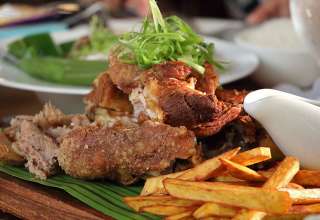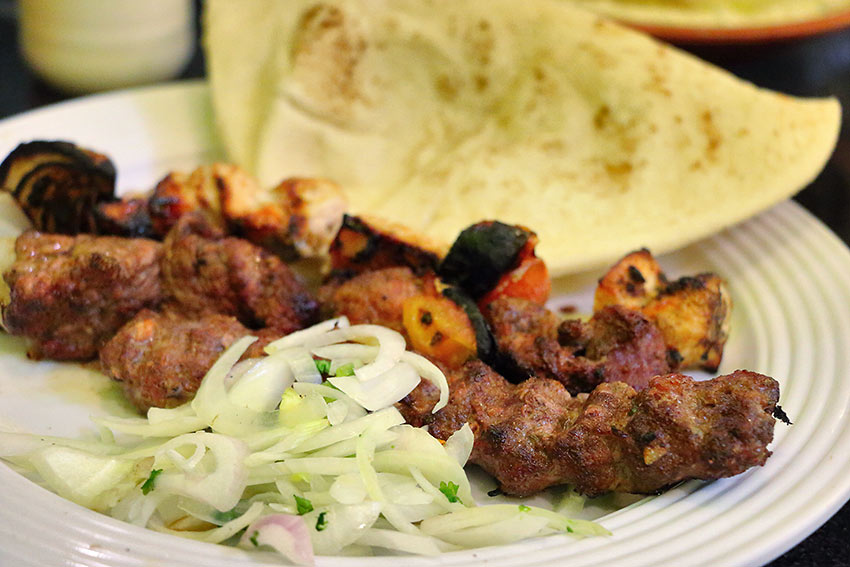
Ever since a month-long stint in the United Arab Emirates more than 20 years ago we’ve become enthusiastic devotees of Middle Eastern food. Several subsequent visits further reinforced that trend but we later realized we need not travel that far to enjoy falafels, kebabs and pita bread. Middle Eastern cuisine has long been popular in the Philippines. Leo recalls munching on shawarmas as far back as the early 1980s when a number of restaurants owned by Middle Easterners began to mushroom in Metro Manila.
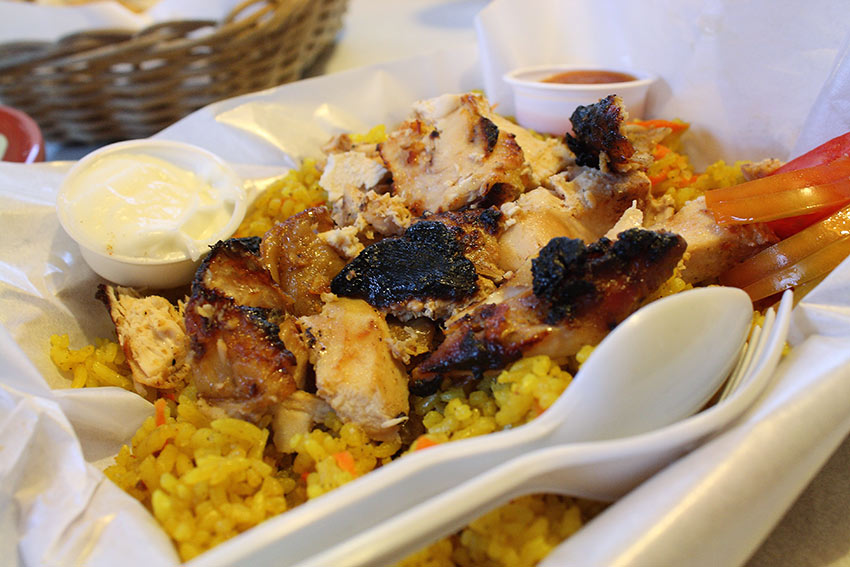
Middle Eastern cuisine is not the same due to regional differences and influences but generally includes Arab, Iranian, Israeli, Assyrian, Azerbaijani, Armenian, Georgian, Kurdish, Cypriot and Turkish cuisines. There are however several common dishes – with regional variations of course – that we’ve relished over the years (Arabic and Iranian for the most part). Here are some of them:
Hummus
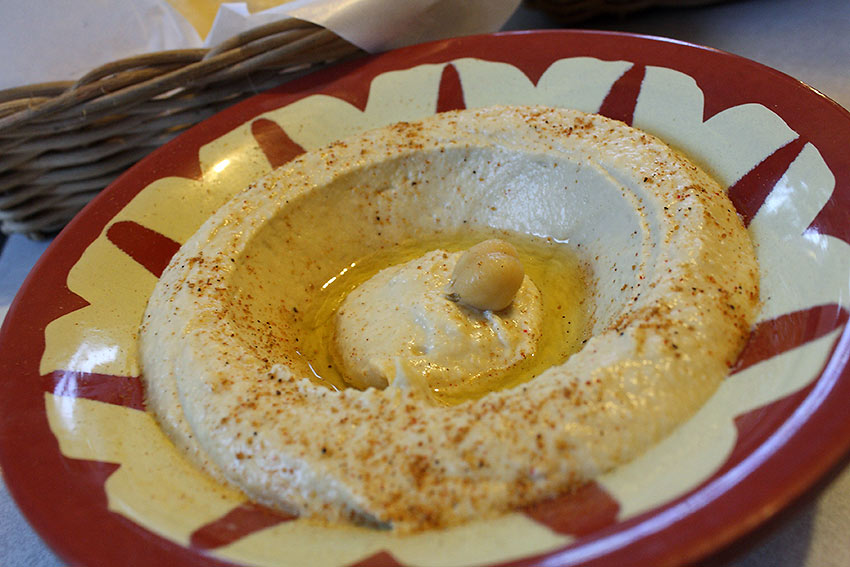
Probably the best known food from the Middle East, this is a rich dip made from mashed chickpea with tahini (the basic building block for much of Mid-Eastern cuisine), olive oil and garlic. Normally an appetizer, it is served with pita bread with the latter being used to scoop up portions of the hummus. When eating this at home we sometimes add olives for good measure.
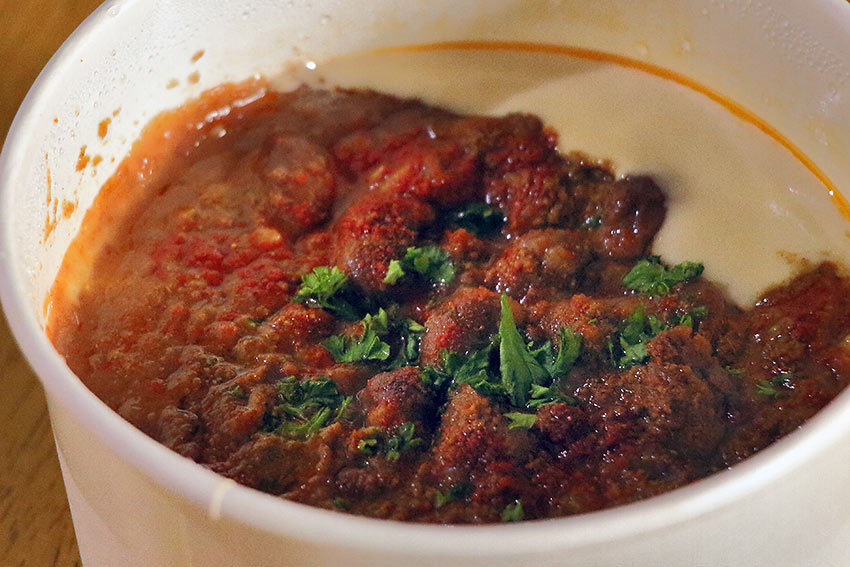
Pita Bread
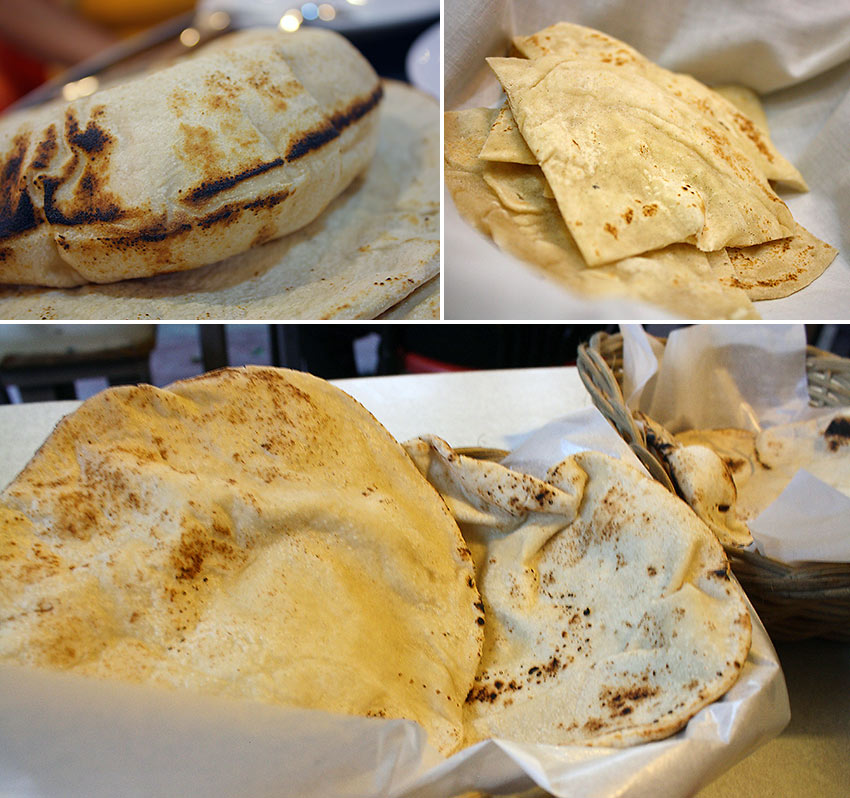
This is a family of round flatbreads of wheat flour and comes in 2 versions: one with an interior pocket as well as a pocketless version. A favorite of ours like the South Asian chapatti and naan, it’s a staple of Mid-Eastern cuisine and is served in practically every meal. Many restaurants serve this bread freshly baked. During this pandemic we often buy ready-made pita bread from groceries here in Mero Manila and just heat it at home prior to serving.
Moutabal or Baba Ghanoush
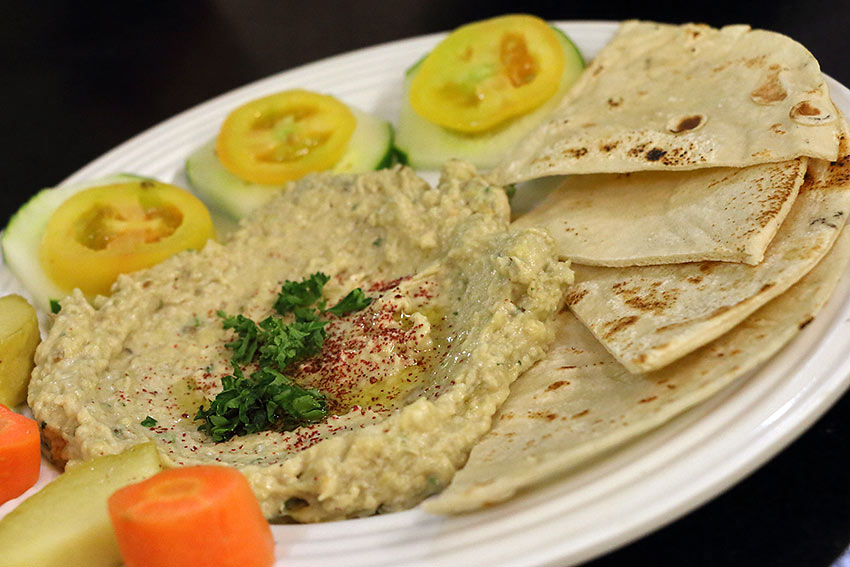
Hummus might be the more popular dip but moutabal for Leo is the better of the two. It has been a part of virtually every home delivery of Mid-Eastern cuisine for us during this pandemic. Made of grilled eggplant and tahini, its smooth and creamy texture as well as smoky flavor makes it an ideal dip for pita bread or vegetables. Add in chili peppers for some extra kick and you’ve got one unbeatable appetizer.
Falafel
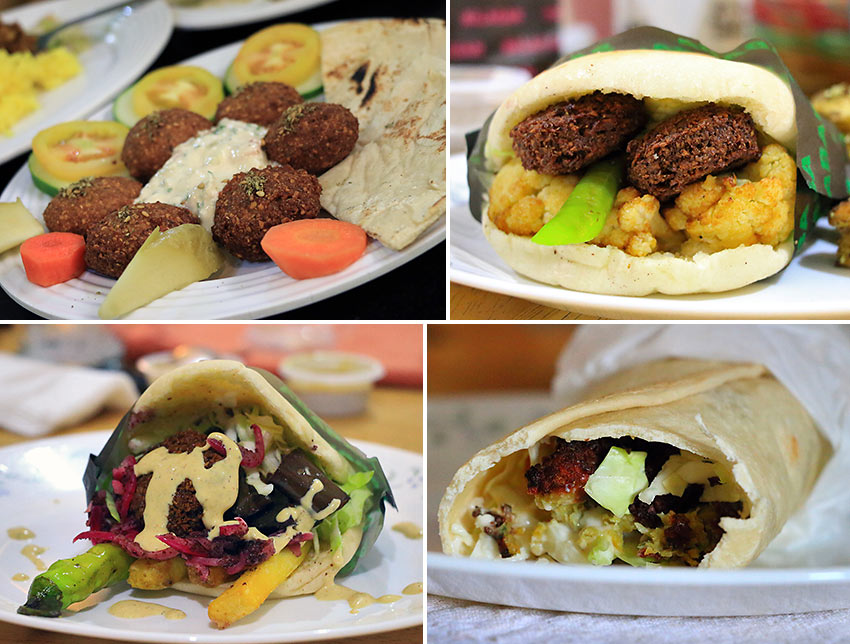
When people are asked to identify the most famous Middle Eastern dish and their answer is not hummus, it’s almost certainly falafel. Any discussion about the true origin of this dish is certain to bring about fierce debates – a matter of patriotic pride between Middle Eastern cultures – so we won’t get into that. A fried ball of chickpeas, onions and spices, the falafel can be used as an appetizer or as the main dish in a meal. Since becoming plant-based eaters, we have adopted it as our main source of Mid-Eastern protein – our most important take-home Mid-Eastern food.
Tzatziki
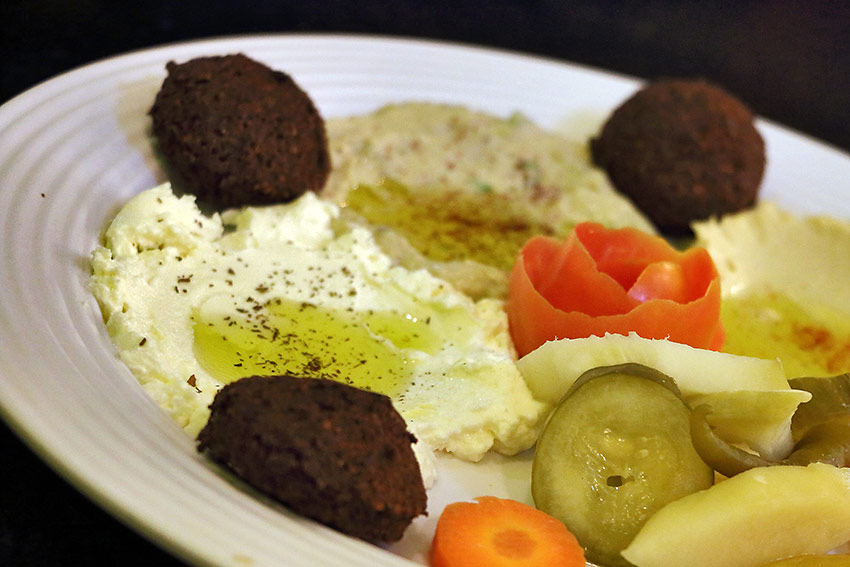
Less well-known than hummus or moutabal, the tzatziki is a dip made of salted yogurt mixed with cucumbers, garlic, salt, olive oil and sometimes made with vinegar or lemon juice and herbs. There are also soup and sauce versions of this dish but we’ve only encountered the dip so far. We find the tzatziki to be an excellent dish but because it’s made from yoghurt we now favor vegetarian dips like the hummus and moutabal.
Kebab
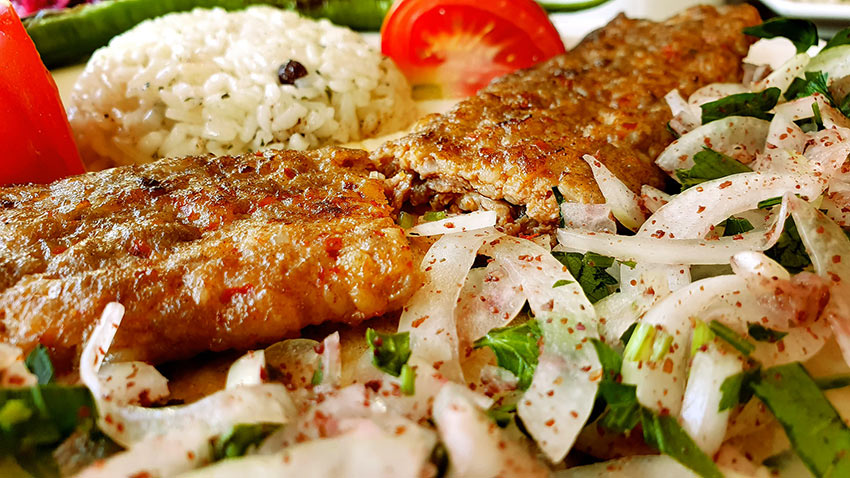
Before our shift to a plant-based diet, the kebab was part of practically every Mid-Eastern meal we’ve had. Kebab is simply grilled meat and in Middle Eastern cuisine mutton or lamb is the favored option. We’ve often dined on mutton kebabs in the Mid-East and during stints in India, Nepal and Pakistan. But in the Philippines mutton is not so popular. Consequently, Mid-Eastern restaurants here serve mainly beef and chicken kebab.
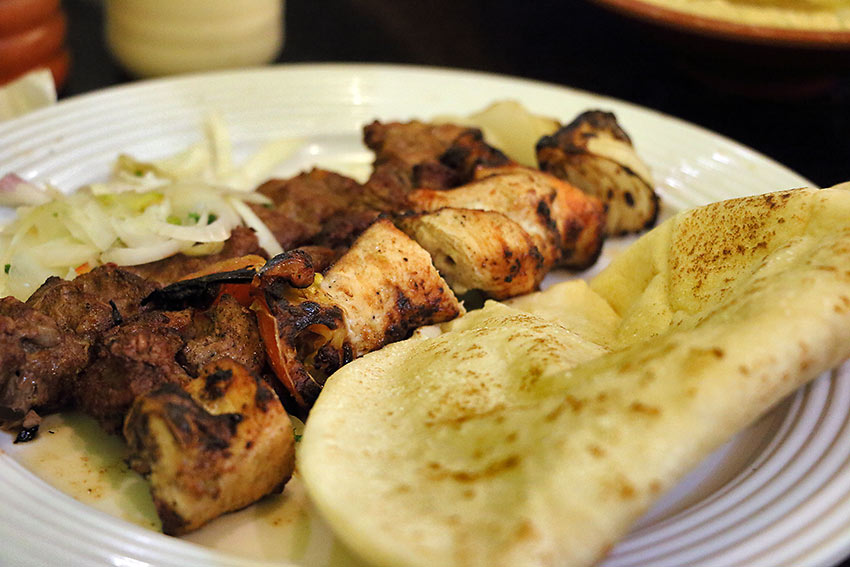
One kebab variety is cubed meat on skewers, otherwise known as shish kebab. This type of kebab is often served on skewers, sometimes alongside grilled tomatoes and onions. Kofta kebab is made from ground meat mixed in with onions and spices and shaped around and grilled on skewers. While several Mid-Eastern restaurants here serve kebabs with rice to cater to Filipino taste, we prefer pita bread to accompany our kebabs.
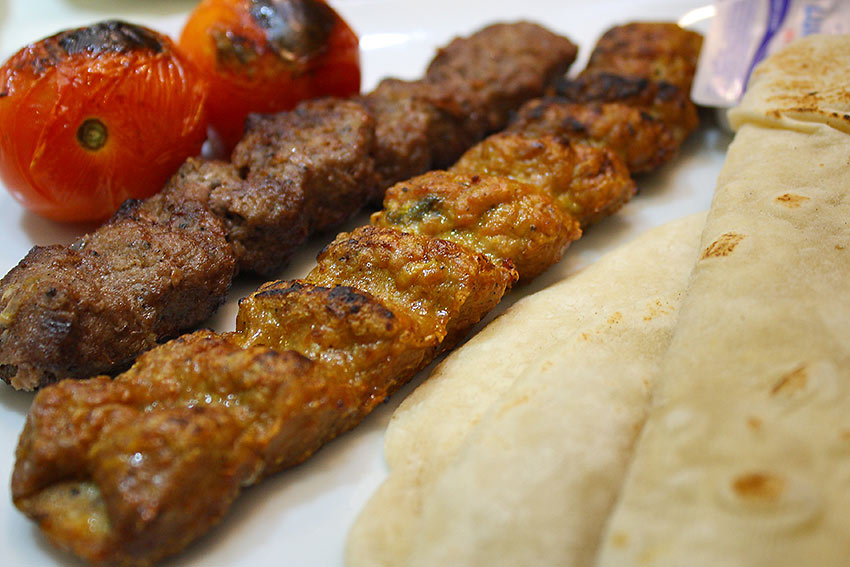
Shawarma
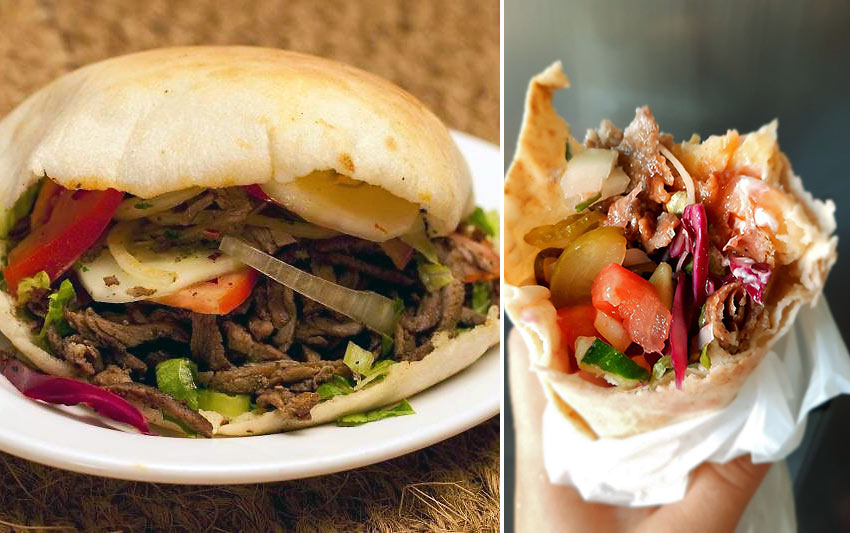
A few decades back, shawarma was the one dish commonly associated with Middle Eastern cuisine here in the Philippines. Even today it is still a favorite among locals. The juicy, tender bits of grilled beef or chicken used to be stuffed inside a pouched pita bread with veggies and garnish. Today the meat and veggies combination is more commonly wrapped in a pocketless pita.
Tabbouleh
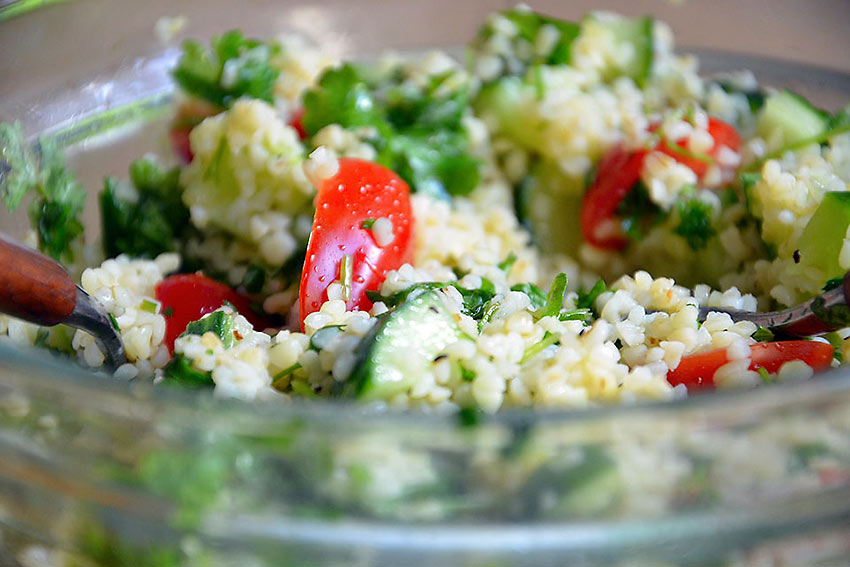
During our visits to the Middle East we would have salads at almost every meal whether in a restaurant or at a home that hosted us. One such salad, the tabbouleh, is traditionally served as part of a mezze – a selection of small dishes, mainly vegetarian, that serve as appetizers. Tabbouleh is made up of chopped parsley with tomatoes, mint, onion and bulgur (cracked wheat), and seasoned with olive oil and lemon juice. For some reason salads are not as common in Mid-Eastern restaurants in the Philippines. Consequently we’ve had it only twice locally.
Dates
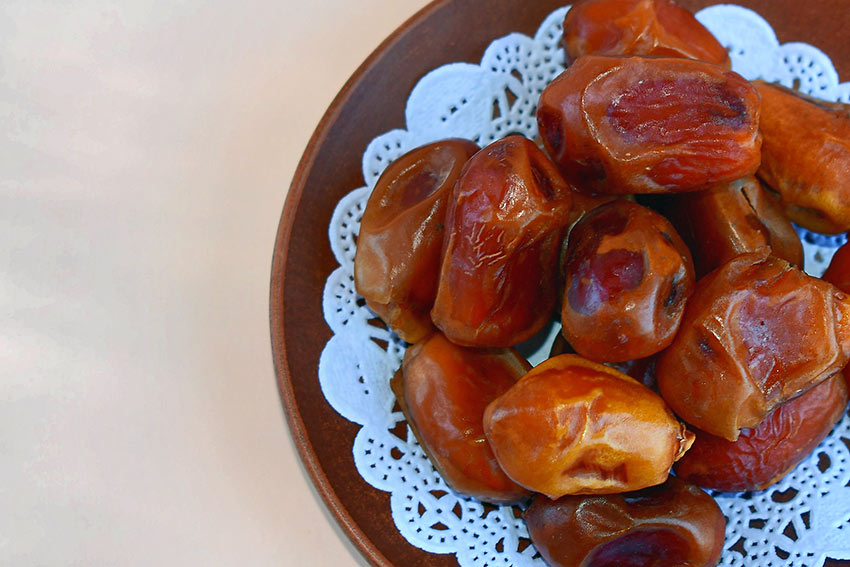
In the arid regions of the Arabian Peninsula, few fruit trees are grown with the exception of the date palm. Dates are highly nutritious, high in fiber and oxidants and have a natural sweetener that is much healthier than sugar. Muslims in the Mid-East use dates for breaking a fast during Ramadan because it helps the body’s blood glucose level quickly return to normal. We always include dried dates for a breakfast of oats, fruit and nuts. When Leo’s blood glucose level is down after a heavy exercise, 2-3 pieces of dates are sufficient to bring it back to a healthy level.
Since this pandemic started we have not gone beyond 100 kilometers from our place in Metro Manila. But we don’t have to leave the confines of our home to enjoy the cuisine of a sub-continent several thousand kilometers away when we could have it right in our dining room.




